What and how is diamond mosaic covered?

Diamond embroidery is simple, accessible and completely charming both in the process of creating a work and in assessing the result of creativity. Stunning pictures are created by children and adults, and the finished work must be in plain sight. And for the result to be literally fixed, the diamond mosaic needs to be covered with something. This issue is often controversial, so it's worth figuring out whether you need to strengthen the layer of pebbles or it is better to leave everything as it is.
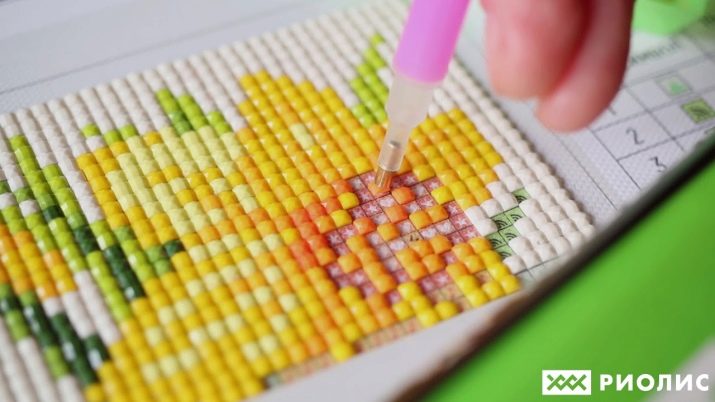
The need for coverage
Diamond mosaics can crumble, that's a fact. And the reasons for such a defect may be different, but the solution is almost always the same - to fix the stones on top.
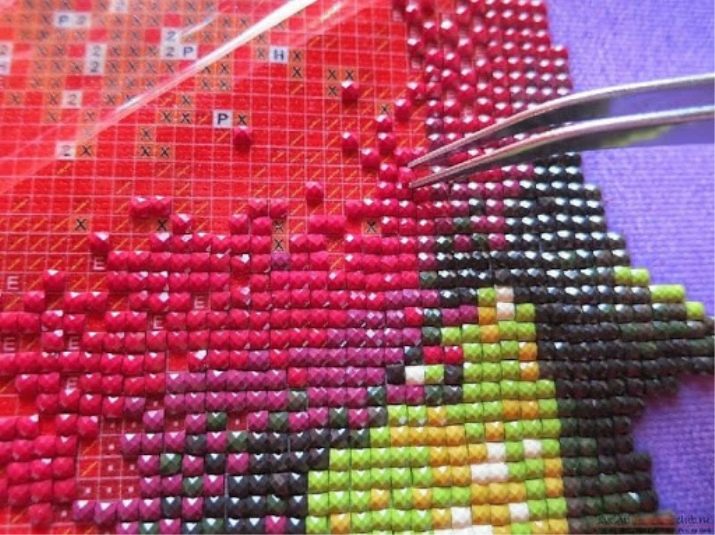
Consider why rhinestones fall off.
- The film comes off the whole picture at once. The reason is that the dust settles on the glue, it simply loses its properties.
- Poor quality equipment. Not all diamond embroidery is impressive in quality. There are also kits questionable in terms of the selected materials, and the glue in such can be used unreliable (for example, with an expired shelf life).
- Square rhinestones. And there are such options, and their styling must be impeccable. If they cling to adjacent elements with corners, they can easily peel off and fall off.
- Uneven blade (working area). Then the stones will fall off predictably, and if not immediately, then after some time.
- External factors. Dryness of the air and direct rays of the sun influence the loss of its properties by the adhesive.

And often the author himself does nothing to strengthen the mosaic on the canvas, immediately sending the picture into a frame. But to prevent the stones from falling off, additional measures will have to be taken.
And even after coating the diamond embroidery with varnish, the picture will shine, which is also beneficial.
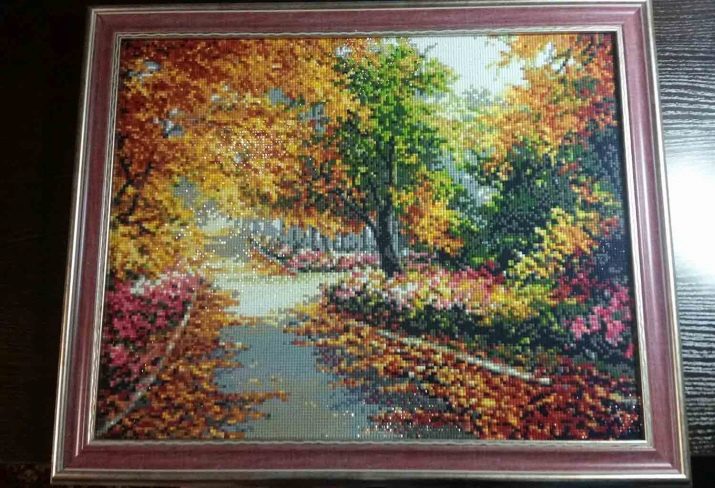
Of course, you can always just hide the embroidery behind the glass, but this is not a guarantee of durability either: stones fell off inside, not necessarily down. They could hang, leaving gaps. So glass is not salvation. In addition, diamond embroidery is so good that it attracts the eye and its structure, you want to run over the stones with your palm. And if the surface is varnished it is doable.

What varnish can be applied?
Varnish is the best method to prevent pebbles from shedding, because with it they stick together. Even if one of the strass and peel off from the base, the rest of it will not be allowed.

There are several recommendations for the choice of varnish and operations with it.
- Matte acrylic varnish is rightly considered the best option. It is often sold in cans. You can also buy a spray or bottle formulation. If the varnish is bottle, it is applied to the surface in two layers.
- Brushing varnish is not the most difficult process. You can also use a foam pad. It is very important to act quickly, otherwise the varnish may smudge. After the starting layer, the work should dry out, and this stage cannot be skipped. Usually the image is left overnight. In the morning, you can apply a second layer to consolidate the result.
- Glossy varnish is also used, but it is definitely not better than matte. If only because gloss can be excessive. It's one thing when embroidery glitters, and quite another when it literally blinds your eyes. And if the work is hanging in a sunlit room, the excessive gloss will only be annoying.
- Sometimes tinted varnishes are also used. In some cases, this is indeed possible and appropriate. The number of layers of varnish is 2, or even 3. It is not so much the thickness of the layer that is important, but its uniformity. If there are bumps in the work, unnecessary relief, this can distort the perception of the embroidery itself.
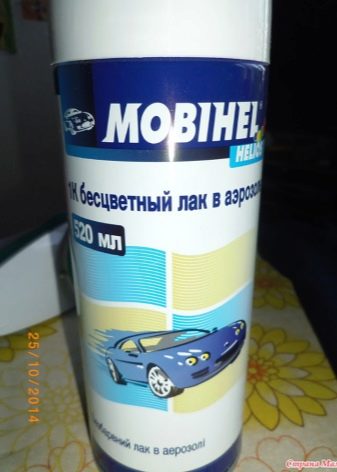
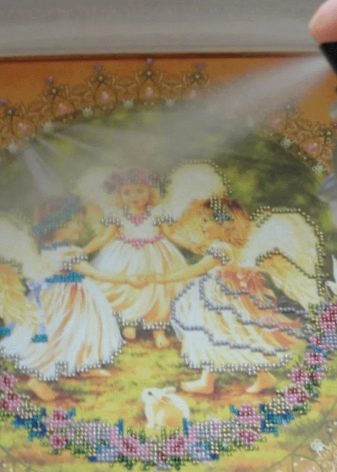
Interestingly, diamond embroidery lovers also talk about using regular hairspray. For large works, this is not an option, it is too expensive a measure. But for miniatures, this is a great tool. Even a children's hairspray with glitter was used, and such a coating was optimal for certain subjects.
Although ordinary acrylic varnish is still more reliable and rational.
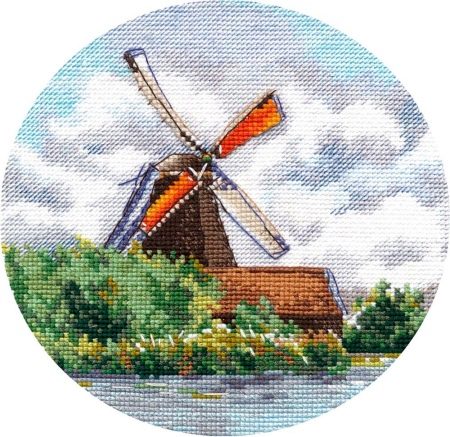
How to fix the mosaic correctly?
Before tackling the varnish, you need to level the picture, the image itself. Many people skip this step, but it is very important. Even those stones that are uneven or do not hold firmly enough will fall into place.
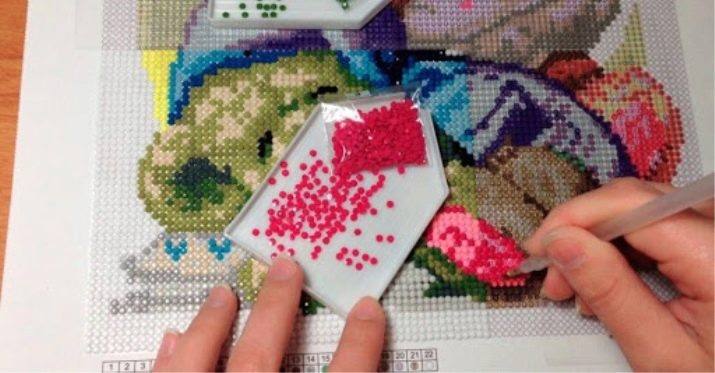
Let's see how to flatten the painting to secure the details.
- You can take an ordinary culinary rolling pin, or you can use a special mosaic embroidery roller. The main thing is that the rolling pin is clean and has handles.
- The fabric is spread on a smooth surface, the finished work is placed on it, pattern up. And it is also covered with a cloth. A rolling pin is rolled over the fabric, right over the rhinestones, and in different directions.
- The rolling pin can be pressed a little to the surface, but without fanaticism. If you hear the crunch of details, you do not need to be afraid: they fall into place.
- When the crunching stops, you need to iron the work for some more time so that it is more firmly fixed on the canvas.
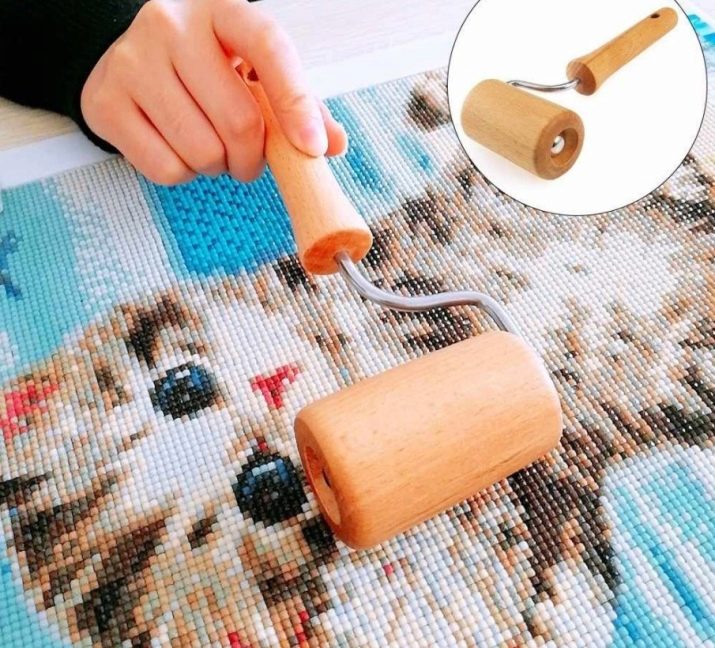
After that, you can varnish the product. Firstly, additional manipulations are no longer needed: the varnished work will be sent to the wall or to another place in the house as a full-fledged decor. Secondly, after leveling the surface and varnishing it will be much easier.
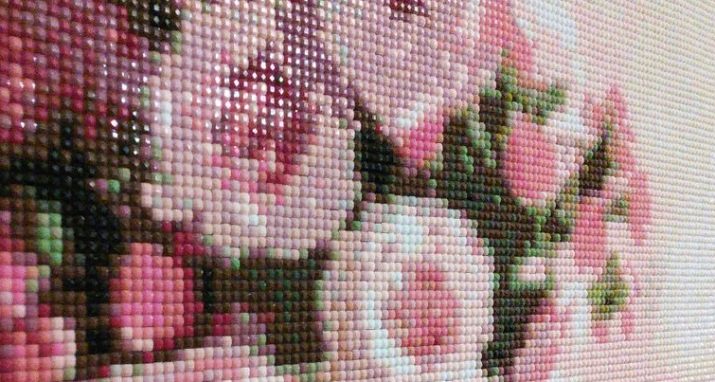
Any product gets dust over time, and embroidery too. I would like to brush the dust off it, but so that the pebbles do not fall off. This can be done because the varnish keeps them together quietly. If the picture is not varnished, you cannot wipe it, as this almost always entails peeling off the rhinestones. It's good if the remnants from the kit are not thrown away, and deformed (or even just lost rhinestones) can be replaced. But if there is nothing to replace, and the peeled-off strass is lost, then there will be emptiness in its place.
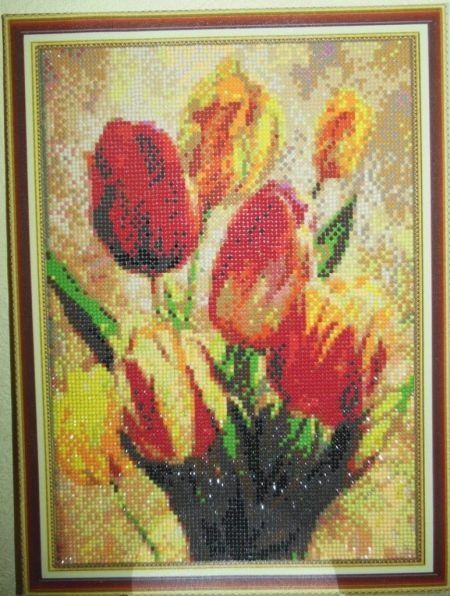
The tools that are used for embroidery, by themselves, contribute to high-quality adhesion. The stylus for rhinestones, if the manufacturer made it flawlessly, does an excellent job with its task: it fixes the pebble in place firmly and immediately reliably.
If the stylus from the kit is lost or does not seem to be of high quality, you can find a similar tool in a creative store.
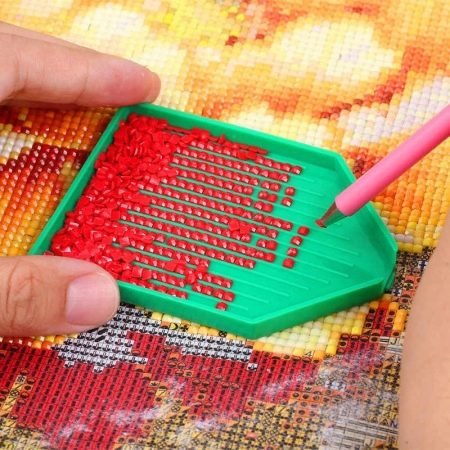
It would seem, why talk about a stylus if everyone uses it. But this is not the case, since there are people who are used to working with tweezers. But a high-quality stylus is sticky in itself, it is much more convenient and effective than tweezers. It works literally pointwise, the rhinestones do not move, the process of laying out is accelerated and simplified.
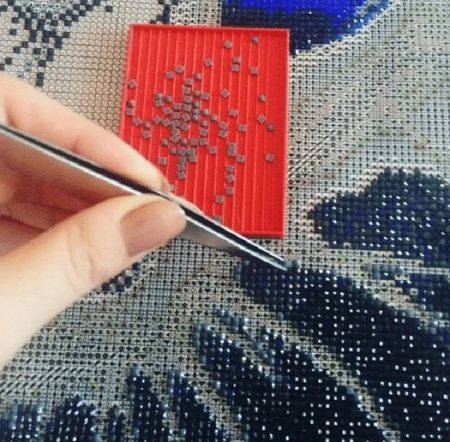
Of course, you need to choose a product with a quality guarantee: you can always be guided by reviews and recommendations. Penny sets rarely give the desired result, pebbles fall off quickly, the adhesive base can be uneven.
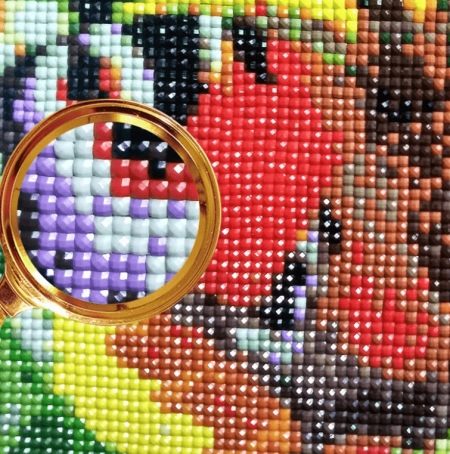
Detailed recommendations for varnishing diamond mosaic can be found in the following video.








